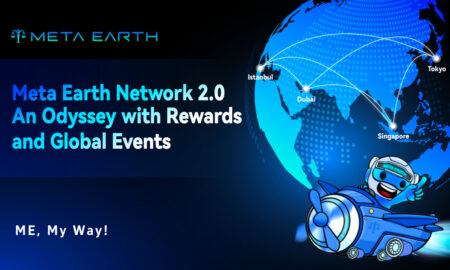Mobile user experience isn’t a one off design—it’s a moving target shaped by real time decisions, micro interactions and user expectations. In this always on world, success belongs to apps that listen as much as they respond. Real time analytics powers this adaptability, turning static metrics into live signals that guide UX in the moment.
Leading this change is Beverly D’Souza , a top woman coder and data engineer who makes systems think. With 10+ years of data engineering and deep focus on architecture and real-time analytics she has changed how mobile experiences work. An award-winning expert, author and researcher, Beverly builds cloud native solutions that combine live data with machine learning to turn feedback into foresight.
“Good UX is no longer just visual,” she says. “It’s behavioural—and behaviour happens in real time.”
Real-Time Analytics as the Foundation of UX Agility
Beverly emphasizes that a mobile app is a living, breathing entity—it must adapt to user behavior in real time to remain relevant. This underscores the importance of real-time insights in creating a continuous feedback loop. Unlike batch data processing, real-time systems enable product and engineering teams to respond to user behavior as it unfolds. Whether it’s detecting a drop in engagement after a UI change or understanding how users navigate new features, these insights facilitate rapid pivots—often within hours rather than weeks.
According to Statista, the global big data analytics market is projected to grow from $15 billion in 2019 to over $68 billion by 2025, reflecting a 30% compound annual growth rate. This surge highlights the escalating demand for real-time data processing and insights.
Through her work in data engineering, Beverly has developed systems that process massive volumes of mobile telemetry, transforming them into actionable dashboards. Her research and industry experience demonstrate how well-designed cloud-native data pipelines can support millions of concurrent users.
Beyond her technical contributions, Beverly is committed to advancing diversity and inclusion in engineering. She serves as a judge for the Society of Women Engineers (SWE), evaluating presentations and workshops that showcase innovation and leadership in the field. SWE is the world’s largest advocate for women in engineering and technology, dedicated to empowering women to achieve their full potential in careers as engineers and leaders.
“Without real-time visibility, you’re flying blind,” she asserts. “Great design doesn’t exist in isolation—it evolves through immediate contextual insights.”
Building on the Right Foundations – Cloud-Native Infrastructure
Having worked directly on the launch of WhatsApp Business Premium and Meta Verified for WhatsApp, Beverly understands the architectural demands of global-scale mobile applications. These initiatives introduced enterprise-grade tools for millions of small and medium businesses, enabling verified identities, advanced automation, and better customer engagement—all powered by scalable backend systems.
“Real-time systems are essential for mobile-first companies,” Beverly explains. “They allow data teams to experiment faster, test hypotheses live, and iterate on features that resonate most with users.”
Cloud-native technologies like Kubernetes, Kafka, Spark Streaming, and Apache Superset underpin these capabilities. They ensure low-latency data processing, support traffic surges, and enable predictive features to run smoothly. According to MarketsandMarkets, the global market for cloud-native applications is expected to grow from $4.2 billion in 2020 to $11.5 billion by 2025, reflecting their value in modern digital ecosystems.
Beverly also focuses on integrating machine learning into streaming pipelines, creating what she calls “ML-augmented feedback loops.” These intelligent systems make split-second decisions—tweaking UI elements, forecasting churn, or flagging suspicious activity—in milliseconds.
The message is clear: platforms that prioritize scalable, responsive infrastructure are better positioned to serve users, stay ahead of competitors, and future-proof their tech stacks. With engineers like Beverly leading these efforts, the future of mobile infrastructure is not just fast—it’s intelligent and deeply user-aware.
The Role of Data Visualization in Human-Centered Design
Real-time data can be overwhelming if not presented correctly. This is where data visualization comes in to bridge the gap between insight and action. Beverly works with teams to create intuitive, layered visual systems that make complex behavioral data clear.
“The best dashboards are not the ones with the most charts—they’re the ones that tell the clearest story,” she says. In her work, she has guided product managers and UX designers to use visual analytics to tell meaningful stories: heatmaps showing drop-off points in user journeys, time-series graphs showing peak engagement windows, and comparative funnels across different user cohorts.
For mobile-first businesses, these visual cues enable more meaningful product iterations—whether it’s simplifying a multi-step registration process or identifying the best time to send push notifications.
Risk Intelligence Meets UX
One of the unique aspects of Beverly’s work is her involvement in deep learning-based risk modeling applied to credit scoring and fraud detection in financial systems. In her paper “AI-Powered Credit Scoring and Fraud Detection in Financial Systems”, she explores how behavioral analytics combined with AI can predict not only risk but also user intent.
“User behavior can signal both delight and danger. The key is to build systems that can tell the difference in real time,” she says.
For mobile apps—especially in fintech, e-commerce and healthtech—recognizing anomalous behavior is critical to maintaining user trust. By integrating real-time fraud detection into analytics systems, developers can improve both user experience and security.
This intersection of UX and risk detection is becoming more and more relevant as digital users demand seamless yet secure experiences that respect their privacy.
The Road Ahead—AI-Augmented UX and Predictive Personalization
Looking forward, Beverly thinks AI-powered personalization, federated learning and edge analytics will change mobile UX design. “Mobile apps won’t just respond to users, they’ll anticipate them,” she says.
Emerging tech like on-device machine learning (MLKit, TensorFlow Lite), real-time sentiment analysis and reinforcement learning models will be at the heart of UX strategy. She sees a future where mobile design is a co-creation between users and algorithms, with context-aware interfaces that adapt to individual user needs.
According to Deloitte, 72% of businesses agree AI-powered personalized experiences are a key driver of customer satisfaction. This stat proves the growing importance of predictive analytics and tailored experiences in mobile app strategy.
“Designers and data engineers must now be co-architects of experience,” Beverly says. “The future of UX isn’t just visual, it’s intelligent, invisible and deeply personal.”
The influence of people like Beverly D’Souza is clear. She advises aspiring data engineers to broaden their perspective: “Learn how users think, not just how systems work. That’s where the real magic happens.” With insights like that, the future of data engineering and UX is going to be awesome through user-centric innovation and real-time adaptability.



































